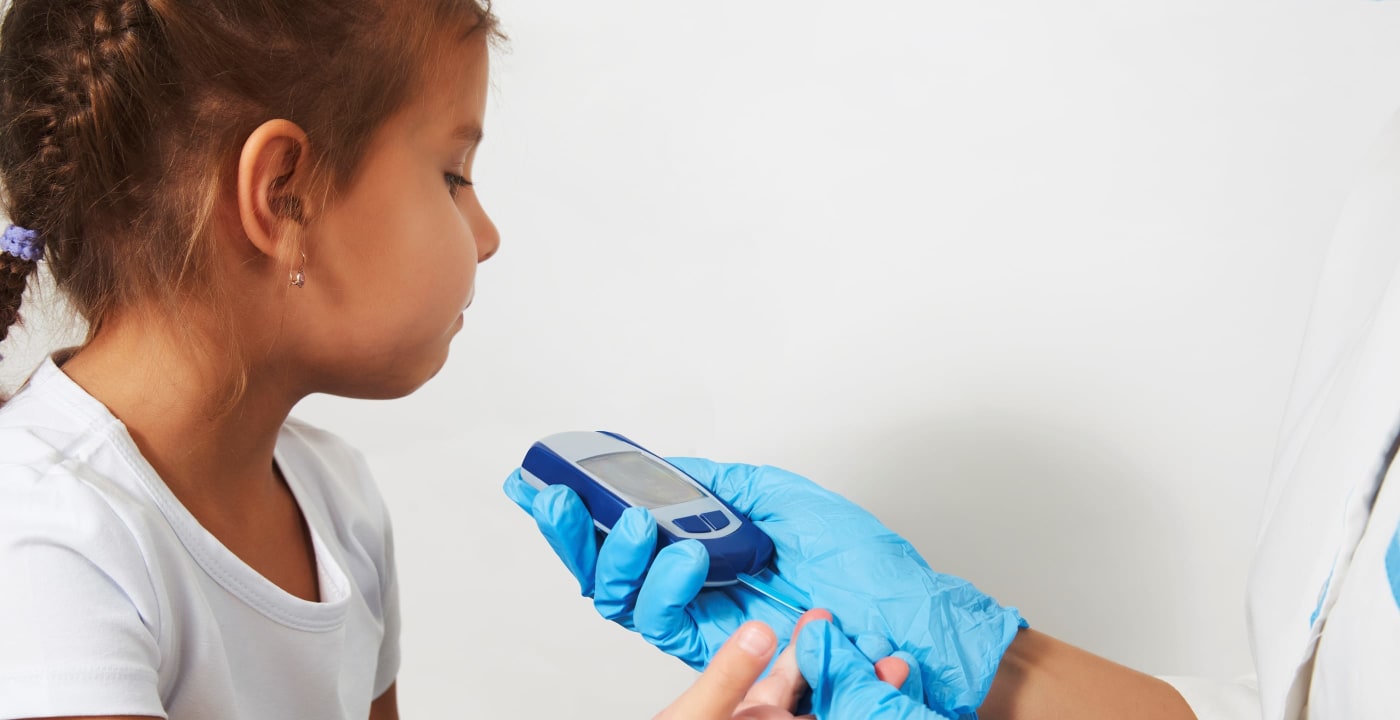COVID-19 infection may raise risk of diabetes for children — what parents should know

A new study published by the Centers for Disease Control & Prevention (CDC) indicates that children who have had COVID-19 may face an increased risk of developing diabetes. The results of the study coincide with what many researchers in Europe are reporting as well as some U.S. hospitals, such as Rady Children’s Hospital in San Diego.
“Multiple pediatric centers across the country are seeing higher rates of new onset diabetes in children since the pandemic started,” says Bhuvana Sunil, MD, a pediatric endocrinologist at Mary Bridge Children’s Hospital. “At Mary Bridge, we are also seeing increases, particularly in the diagnosis of Type 1 diabetes.”
What does this mounting evidence about the potential risk of diabetes mean for children and their parents?
Diabetes and COVID-19
Diabetes is a chronic condition where the body doesn’t produce or properly use insulin, a hormone that regulates blood sugar levels in the body. There are two widely recognized types of diabetes: Type 1 occurs when the immune system attacks the pancreas, the organ that produces insulin. Type 2 can develop when risk factors such as obesity and physical inactivity cause insulin resistance and eventual pancreatic failure.
“A diagnosis of diabetes, regardless of the type, has a huge impact on a child as well as their family,” says Dr. Sunil. “It requires significant lifestyle adjustments — from changes in diet and exercise routines to daily medications or insulin injections — which often have to be maintained throughout life.”
The relationship between diabetes and COVID-19 is complex, and our understanding of how these two diseases interact with one another continues to evolve. While it’s known that children (as well as adults) with diabetes have an increased risk of experiencing severe symptoms of COVID-19, much less is known about how COVID-19 influences a child’s risk of developing diabetes.
Study basics
The investigators of the CDC study examined two insurance claims databases with information about more than 1.5 million patients under the age of 18. The information was collected from March 2020 through June 2021.
Investigators found that children who had been infected with COVID-19 were 31 to 166 percent more likely to develop Type 1 or Type 2 diabetes 30 days or more after their infection than children who had not been infected with COVID-19. These findings are consistent with prior research that established a link between COVID-19 infection and the development of diabetes in adults. The investigators of the CDC study did not find any association between diabetes in children and other types of viral respiratory infections.
“It’s important to note that while the study does show an association between COVID-19 infection and diabetes in children, it isn’t yet known whether COVID-19 actually causes diabetes,” Dr. Sunil explains. “To determine that, we need more research that tracks incidences of diabetes in children over longer periods of time.”
What parents need to know
There are many reasons COVID-19 could increase a child’s risk of developing diabetes. Some people are genetically predisposed to developing diabetes due to family history of the disease or a malfunctioning immune system. It’s possible that the virus may trigger a cascade of inflammation in the body that hastens that process. It’s also possible that other factors associated with the pandemic such as weight gain and more sedentary lifestyles — both risk factors for Type 2 diabetes — have a role to play.
Regardless of how exactly COVID-19 may trigger the onset of diabetes, here are the key takeaways for parents:
Watch for diabetes symptoms following a COVID-19 infection. “If your child is otherwise healthy but suddenly starts experiencing symptoms of diabetes, particularly after a COVID-19 infection, then you should contact your pediatrician,” Dr. Sunil says. Common symptoms of diabetes include increased thirst or hunger, unexpected weight loss, frequent urination, bed wetting, excessive fatigue, vomiting, nausea and blurred vision.
Promote exercise. Physical inactivity and obesity can put children at risk for developing Type 2 diabetes, whether or not they contract COVID-19. In fact, one in five U.S. children is prediabetic, meaning their blood sugar levels are higher than normal. To maintain your child’s health, encourage them to be as active as possible. According to the CDC, an ideal goal is at least 60 minutes of physical activity a day.
“If you have concerns about your child’s weight or activity level or if there is a history of diabetes in the family, it may be a good time to talk to your pediatrician if you haven’t already,” says Dr. Sunil.
Take steps to avoid transmission of COVID-19. Vaccination, masking and social distancing are all effective at preventing COVID-19. Children 5-17 years old are eligible for vaccination.
Be vigilant about care. “If your child has already been diagnosed with diabetes and they get sick with COVID-19, they are at higher risk for complications,” Dr. Sunil says. “Make sure they hydrate well and stay on top of their medications.”



